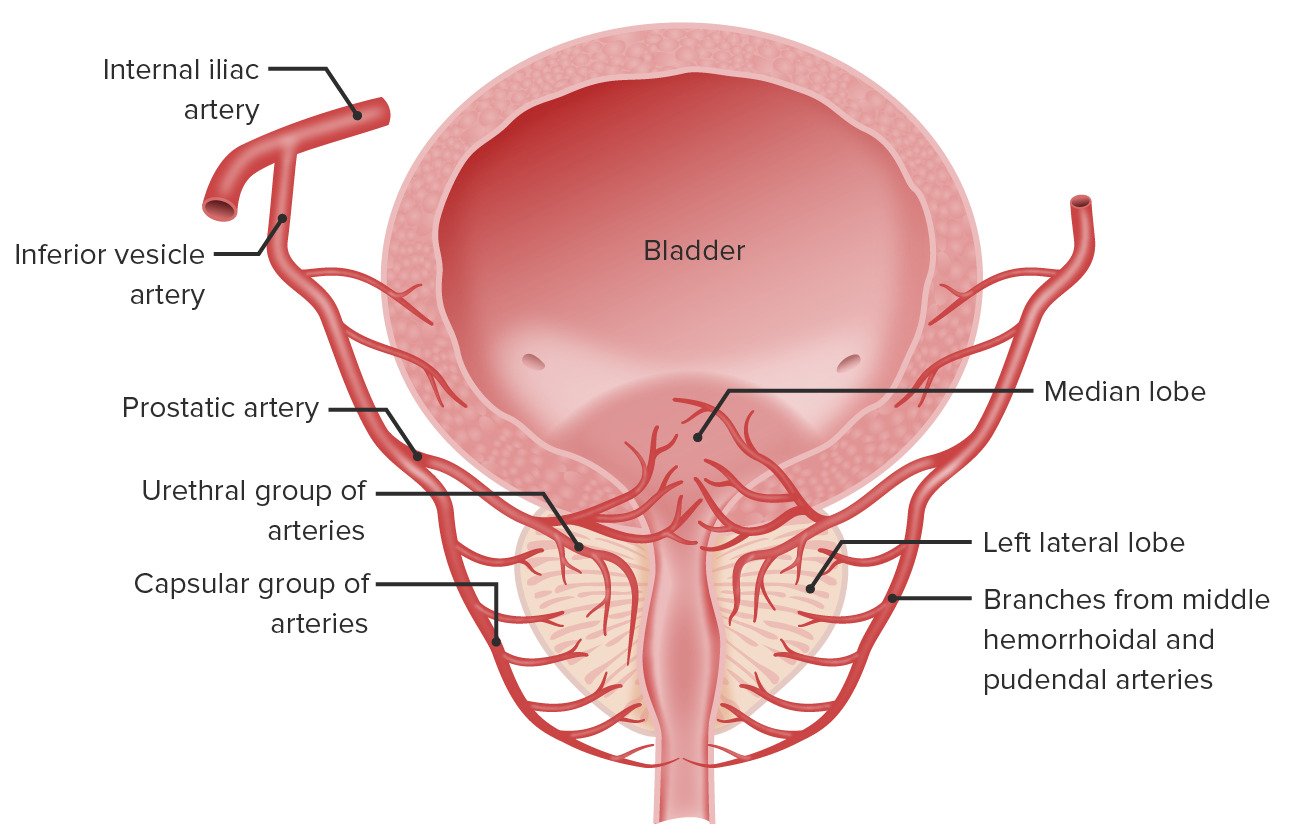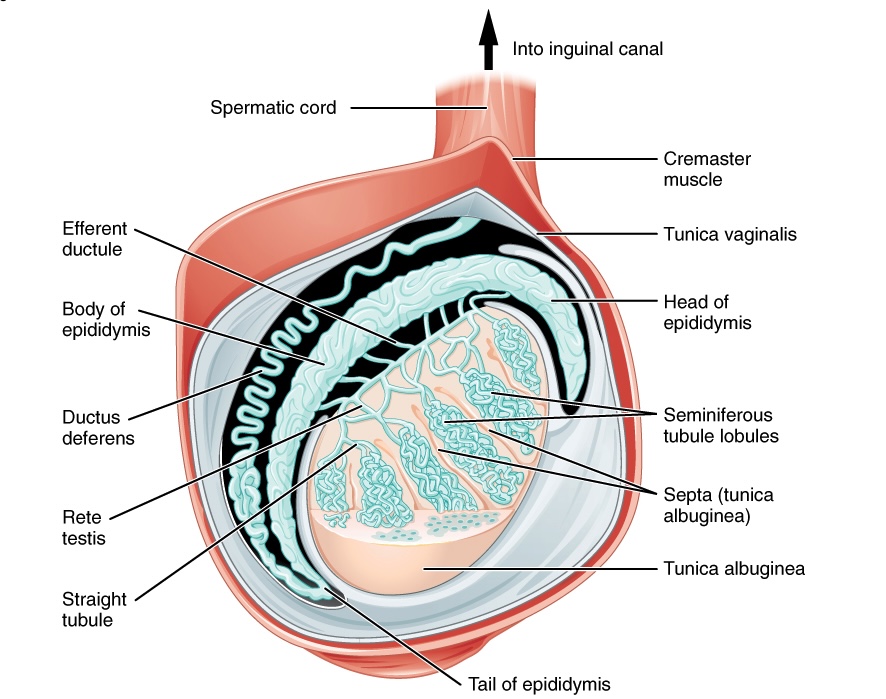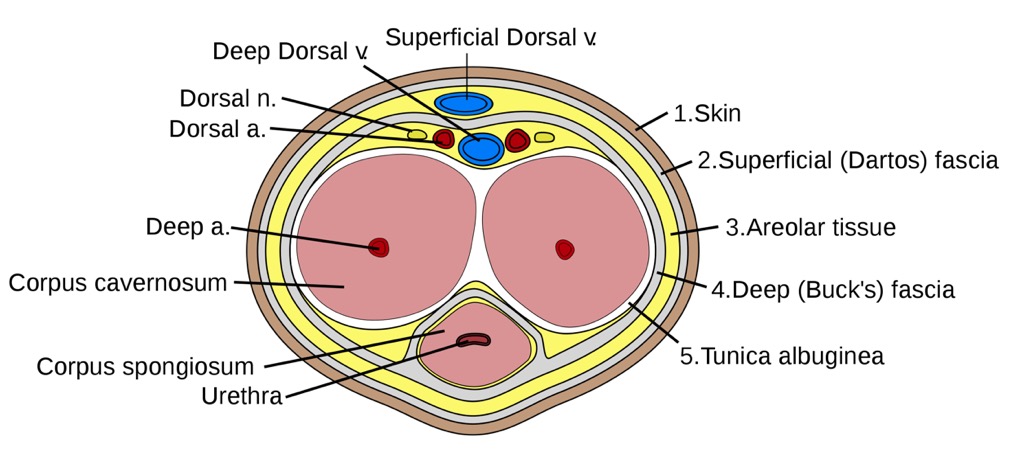Playlist
Show Playlist
Hide Playlist
Penis – Male Reproductive System
-
Slides 07 Human Organ Systems Meyer.pdf
-
Reference List Histology.pdf
-
Download Lecture Overview
00:01 The penis is the erectile organ of the male. It’s a copulatory organ. And if you section through the penis, you can see the erectile tissue. The main erectile cylinders or tissues are called the corpora cavernosa. They are really just large spaces that engorge with blood, and those large spaces are lined by endothelium, the normal line you’d expect in blood vessels. 00:34 The urethra is within another tubular structure called the corpus spongiosum. That doesn’t become erectile tissue. It maintains the patency of the urethra. So during ejaculation, erection is maintained but also towards the lumen of the urethra maintained open. If we now look at the erectile process, in this diagram, you see pictures or diagrams of the penis, the flaccid penis, when it’s usually acting as part of the urinary system, and then the erect penis when it’s acting as part of the reproductive system. And on the right-hand side, you see a section through the penis, all be it rather faint, just to point out the corpora cavernosas, the erectile components of the penis that become engorged with blood. And on the right-hand section through the penis, you can see a very faint outline of the male urethra enclosed by the corpus spongiosum. Normally in the flaccid penis, when blood comes down, it flows a little bit into the corpora cavernosums but it’s diverted mostly into the venous system and returned back towards the heart. Sphincters close down so that blood tends to be diverted from the corpus carvenosums or at least a lot of blood. Under sexual stimulation, though, that sphincter can then open up. So more blood is diverted into the corpora cavernosums, and so the penis becomes erect, that area becomes engorged with blood. And it becomes engorged with blood because of the relaxation of muscles, smooth muscle cells around the vessels and the opening of that supply to the corpora cavernosums. But at the same time, the venous return out of the penis is restricted, because the vein coming out of the penis through the penile areas comes out at an oblique angle. And so when the penis becomes erect, that vein is closed off, and therefore, blood is not then continually flowing through the penis, hence, the erection. Here again is the corpus cavernosums that is the erectile tissue, and the corpus spongiosum is the area around the urethra. Well, let’s now summarize what I’ve covered in this lecture. It’s important to understand that the epididymis is the location for sperm to become mature. Sperms tend to spend 10 to 12 days in the epididymis going through this process, and they gain motility. Then there's all duct system that leads the sperm to the epididymis coming from the testis. It’s important to understand those as well. 04:00 And then there’s a seminal vesicle that secretes fructose, the main energy source for the sperm, understand its structure. It’s a tubular convoluted glandular tissue. 04:14 And then make sure you recall the importance of the prostate gland, its secretory product, and also the way in which the glands are arranged, and therefore, the occurrence of conditions that can restrict the flow of urine, and also the conditions that can lead to cancerous lesions in the prostate. And finally, recall the structure of the penis, the erectile tissue, and the process in which that erectile tissue becomes engorged, and therefore, leads to erection of the penis, so it become into the copulatory organ. Well, thank you for listening to this lecture. 04:55 I hope you now know something about the duct systems in the reproductive system of the male, and also knowledge about the very important accessory glands. And, of course, the structure and function of the penis. So thank you again for listening to this lecture.
About the Lecture
The lecture Penis – Male Reproductive System by Geoffrey Meyer, PhD is from the course Reproductive Histology.
Included Quiz Questions
What is the correct chronological order of the basic process that allows the penis to become erect under sexual stimulation?
- The arterioles and arteries in the corpora cavernosa dilate -> blood flow is diverted into the corpora cavernosa -> the cavernous spaces are engorged => venous return is restricted
- Venous return is restricted -> arterioles and arteries in the corpora cavernosa dilate -> blood flow is diverted into the corpora cavernosa -> the cavernous spaces are engorged
- The arterioles and arteries in the corpus spongiosum -> blood flow is diverted into the corpora cavernosa -> the cavernous spaces are engorged => venous return is restricted
- The venules and veins in the corpora cavernosa dilate -> blood flow is diverted into the corpora cavernosa -> the cavernous spaces are engorged => arteriole blood return is restricted
- The arterioles and arteries in the corpora cavernosa dilate -> blood flow is diverted into the corpus spongiosum -> the cavernous spaces are engorged => venous return is restricted
Which of the following is the main erectile tissue of the penis that becomes engorged with blood?
- Corpora cavernosa
- Corpus spongiosum
- Glans penis
- Bulb
- Prepuce
Customer reviews
5,0 of 5 stars
| 5 Stars |
|
5 |
| 4 Stars |
|
0 |
| 3 Stars |
|
0 |
| 2 Stars |
|
0 |
| 1 Star |
|
0 |






